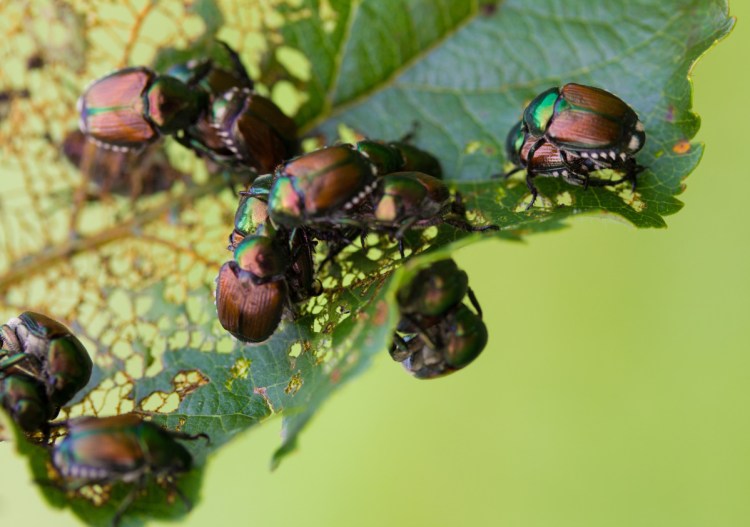The chore of planning our vegetable garden just got a lot easier.
That’s what I took away from a talk given by Eric Sideman, crop specialist for the Maine Organic Farmers and Gardeners Association, at the Maine Agriculture Show at the Augusta Civic Center this month.
One of the best ways to manage pests is to rotate crops, Sideman said, as many others have said before. But it turns out, he wasn’t talking to me and, I suspect, most of my readers.
“Crop rotation really doesn’t work in a (home vegetable) garden,” he said. “If you plant something at one end of the garden and move it to the other end of the garden, there is not a pest that won’t work its way down to that plant.”
That holds true even for the pests that can’t fly and must crawl from one end of the garden to the other – and there are a quite a few of them, including the first stage of the Colorado potato beetle.
Rotating garden crops may have slight benefits for soil management, Sideman acknowledged, but not enough that I am going to bother to lay out grids for our various vegetables. From memory alone, I’ll get enough rotation to keep the soil from harm.
The best way to keep pests out of your crops is a physical barrier, which works by keeping the pests away from growing crops. The method is preferable to using poisons, even those certified organic, to kill the pests.
Floating row covers have been around for years, and they are getting more popular among home gardeners. They can protect early crops from frost, and all crops from pests, while letting in let sunlight, water and air circulation for the plants.
With fruiting plants, gardeners must remember to remove the row cover when flowering begins in order to let pollination occur, Sideman said.
He also mentioned a product with which (I am ashamed to admit) I was totally unfamiliar: Surround Crop Protectant. An online search revealed it was released 20 years ago, so I’m a bit surprised I hadn’t read about it or seen it in a store over that time.
It is made of a type of clay (kaolin) that coats plants leaves to keep away pests including aphids, Japanese beetles, leafhoppers and cutworms. It protects plants from sunburn and heat stress in warmer areas, according to product descriptions, but we don’t have to worry about that in Maine.
Sideman said Surround is most effective when flats of seedlings are dunked in it before they are planted, although written descriptions say spraying in the field also works – as long as the whole plant gets covered.
If barriers and rotation don’t work, farmers may have to move on to organic pesticides. Sideman supports switching between Bt and Spinosad so the insects don’t build up a tolerance. He likes Bt better because Spinosad is expensive.
Sideman used the potato leafhopper as a prod to get people to sign up for MOFGA’s pest-alert emails (do so at mofga.org). It’s a mistake to think that if you don’t grow potatoes you don’t have to worry about this pest. The misleadingly named pest, which sucks moisture from plants at the same time injecting a poison that kills leaves, also like to dine on beans, strawberries, cowpeas, eggplant and dahlias.
The leafhopper won’t survive a Maine winter. It actually overwinters near the Gulf of Mexico and makes its way north as the temperature warms. But if the leafhopper is in New Jersey and a rain and wind storm is about to hit, the bug can ride that storm to Maine fields, Sideman said. The Pest Alert lets gardeners and farmers know when it has reached New Jersey.
Sideman also took the opportunity to note that he will no longer be writing the pest alert, which is being taken over by Caleb Goossen, a crop and conservation specialist with MOFGA.
In his talk, Goossen focused on nutrients, noting that most organic farmers take their nutrients from compost. People should get any compost they buy tested, he urged, because the nutrients – especially nitrogen, which he said is the one farmers should pay most attention to – will wash away if the compost pile is not covered during heavy rainstorms.
Goossen stressed the importance of soil tests, because nitrogen levels change quickly, especially during rainy seasons.
Sideman said that his favorite nitrogen-heavy fertilizer is soybean meal. First, he said, it is effective. Second, it is a byproduct of making soybean oil, so it is something that would otherwise be thrown away. He added that in compost piles that are high in carbon – most piles in home gardens are because they include many fall leaves and other plant waste – soybean meal can provide a better carbon-nitrogen mix.
Thanks to Sideman, I’ll be spending more time covering my compost bins during rainstorms and less time with graph paper, rotating my crops.
Tom Atwell is a freelance writer gardening in Cape Elizabeth. He can be contacted at:
tomatwell@me.com
Send questions/comments to the editors.



Comments are no longer available on this story